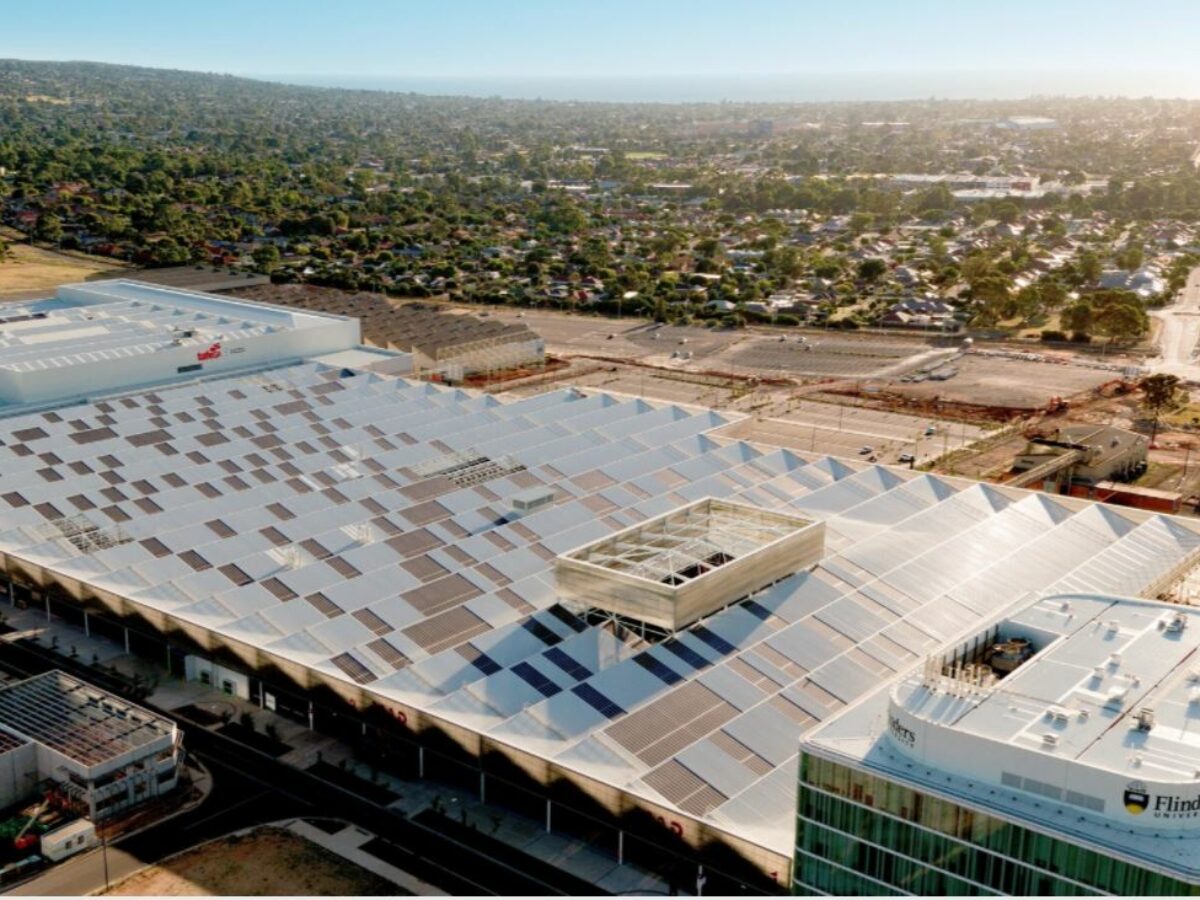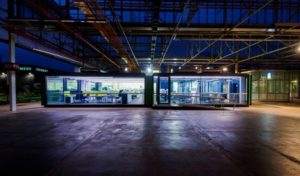Leadership in factory automation – introduction to our new editorial series

Manufacturing has entered a fourth industrial revolution, presenting once in a lifetime opportunities for Australia to escape its recent past and once again build a viable, competitive manufacturing sector. Recognising that technology and automation has never been more important, today @AuManufacturing launches its latest editorial series – Leadership in factory automation. Here Peter Roberts surveys the lay of the land.
Last week the Prime Minister, Scott Morrison made a brief foray from Canberra to visit the former Mitsubishi Motors main assembly building in the Adelaide suburb of Tonsley.
Where once had been a highly competent, flexible car manufacturing plant, today there is a collection of educational institutions and large and small technology companies clustered together in what is called the Tonsley Innovation Precinct (main picture).
If the Mitsubishi days were a highpoint of an era of industry 3.0 manufacturing complete with robots and automated systems, Tonsley’s 61 hectares of repurposed buildings represent a blueprint for today’s technology and data-driven industry 4.0.
Key is the co-location of 8,000 TAFE SA and Flinders University academics and students with established leaders Siemens, Carl Zeiss, British Aerospace Australia, Sage Automation and innovative start-ups Signostics, Hydrix, HYDROFLEX, Advanced Focus, and Cohda Wireless – in all 35 companies.
Hydrogen Park SA’s electrolyser feeds clean hydrogen into the gas reticulation system of the surrounding suburbs, autonomous shuttle buses navigate local streets, and a workforce of 1,000 when Mitsubishi closed in 2008, has become more than 1,700.
But Morrison visited one company in particular which is well known to readers of @AuManufacturing – carbon fibre nanotube X-ray machine manufacturer Micro-X (pictured below).

The company’s Tonsley manufacturing capabilities are unique globally, with Micro-X developing and making advanced X-ray machines for a range of customers from the Australian Stroke Alliance to the US Department of Homeland Security.
Standing in front of Micro-X Morrison said: “This very place tells the story of the economic transformation of South Australia and where our manufacturing industries are going in the future.
“They have gone from making (cars) to making X-ray machines and high tech brain scanners…that’s the technology but it is also the skills that have been built up here to make things.”
While Morrison fluffed his lines, confusing Mitsubishi with Holden, there is no doubt Tonsley points to the move from the age of capital-intensive, labour-intensive production facilities to companies leveraging digital technologies to deliver intellectual property, value adding, customisation and business models to sell new products and services to a global market.
Focused even beyond the cutting edge of industry 4.0 is a collaboration with Flinders University and BAE Systems Australia Maritime, the $10 million Line Zero – Factory of the Future, which is developing all digital technologies that support the construction and delivery of the Hunter Class Frigate Program.
Their collaboration at Tonsley is driving the digital transformation through advanced robotics, assistive manufacturing and readiness utilisation – both inside the shipyard and more widely in the Australian supply chain.
Over the coming two weeks @AuManufacturing will present a range of stories exploring th transition of manufacturing in our new editorial series, Leadership in factory automation.
This starts today with an interview with one of the titans of Australian manufacturing – David Singleton of mining equipment supplier Austin Engineering.
As CEO of Perth shipbuilder, Austal he took that company global, breaking into the US Navy defence market. Now he is driving Austin Engineering into the industry 4.0 age. You can read the interview here.
This interview, plus the articles by thought leaders, automation practitioners and cutting edge case studies in our series have been made possible by the generous support of Bosch Australia Manufacturing Solutions (BAMS) and the Innovative Manufacturing Cooperative Research Centre (IMCRC).
BAMS, part of manufacturer Robert Bosch Australia, draws on its experience, resources and talent across the globe to develop manufacturing solutions for customers from start-up to world-scale in Australia.
From its base at a new $17 million Manufacturing Automation Centre in Clayton, Victoria, BAMS designs and builds its own machines and integrates them into full production/processing solutions.
BAMS advises on lean line design, design for manufacture, value stream mapping and design and feasibility studies. And it designs and builds a range of robotics and automation applications including automated assembly, packing, palletising and labelling.
The Innovative Manufacturing Cooperative Research Centre helps Australian companies increase their global relevance through research-led innovation in manufacturing products, processes and services.
Funded by the federal government, IMCRC’s vision is for Australian manufacturing to be thriving, relevant and globally integrated. As a not-for-profit, independent cooperative research centre, it helps Australian companies increase their relevance through collaborative, market-driven research in manufacturing business models, products, processes, and services.
In collaboration with companies, research organisations, industry associations, and government, IMCRC co-funds, on a dollar-for-dollar basis, broad, multidisciplinary and industry-led research projects that deliver commercial outcomes. It also advances the wider cause of manufacturing transformation through industry education and public advocacy.
Pictures: Tonsley Innovation Precinct
@AuManufacturing’s editorial series – Leadership in factory automation – is brought to you with the support of Bosch Australia Manufacturing Solutions, and the Innovative Manufacturing Cooperative Research Centre.
Subscribe to our free @AuManufacturing newsletter here.
@aumanufacturing Sections
Analysis and Commentary Awards Defence Manufacturing News Podcast Technology Videos












